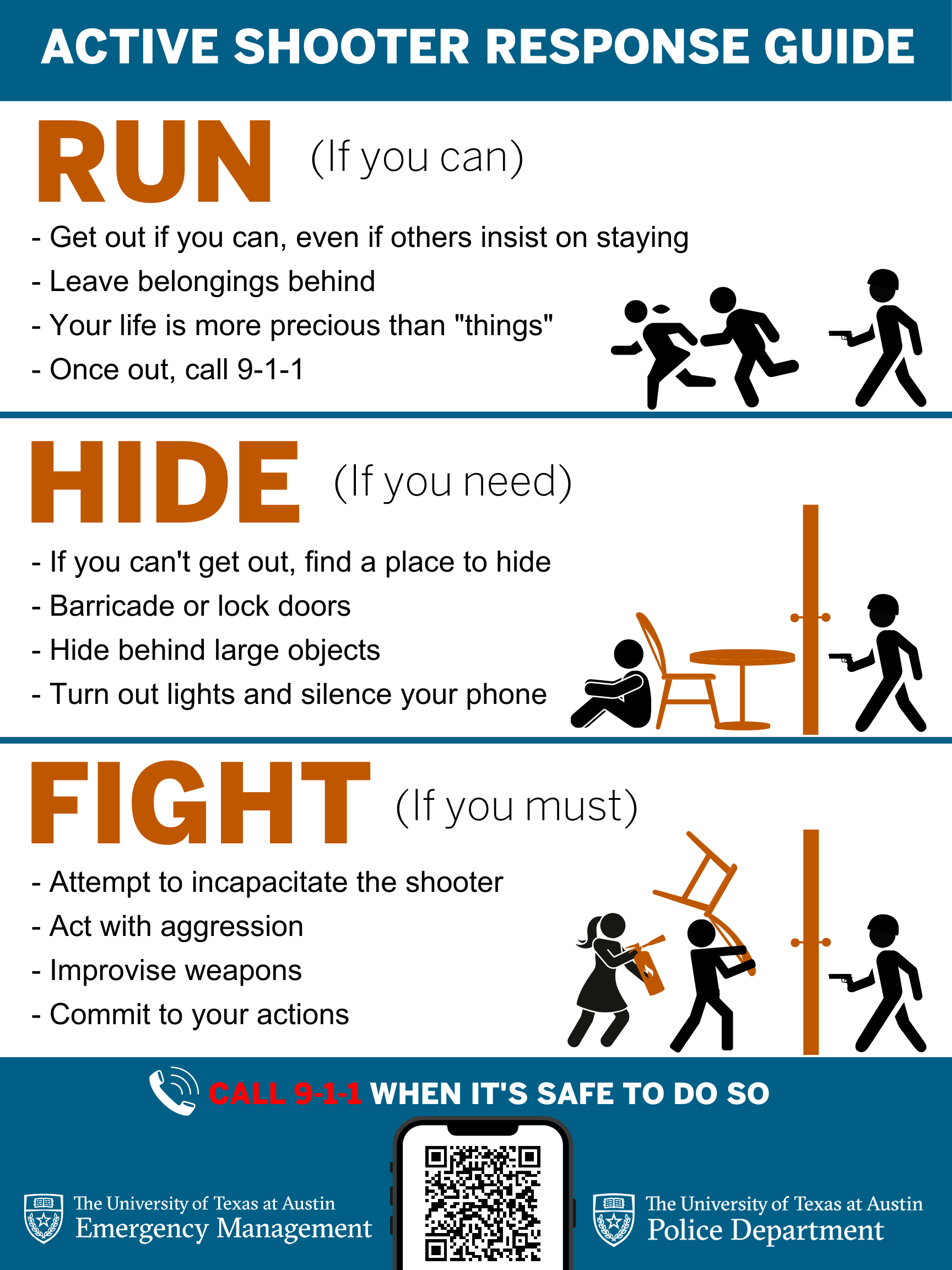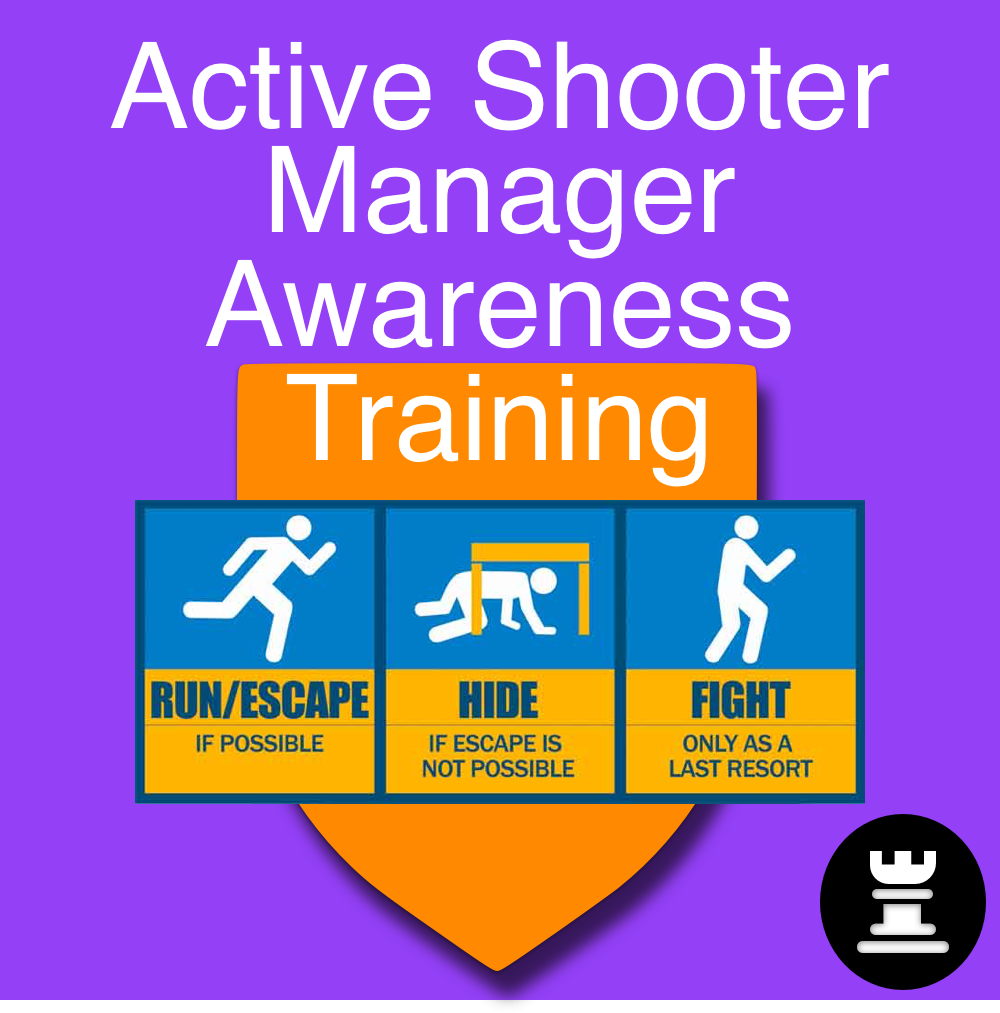The Significance of Active Shooter Training in High-Risk Atmospheres
The Significance of Active Shooter Training in High-Risk Atmospheres
Blog Article
Discovering the Trick Components and Purposes of Effective Active Shooter Training Programs
Energetic shooter training programs are essential in gearing up individuals and organizations with the needed skills to respond successfully to potential dangers. As we explore the ins and outs of these training programs, it becomes obvious that comprehending their detailed nature is vital to enhancing safety procedures and feedback abilities.
Importance of Active Shooter Training
Energetic shooter training programs are crucial for improving readiness and feedback when faced with prospective dangers. These programs aim to equip individuals, organizations, and areas with the knowledge and abilities necessary to efficiently react to active shooter situations. The enhancing frequency and intensity of such cases highlight the relevance of proactive procedures, as prompt and informed feedbacks can dramatically alleviate harm.
Furthermore, active shooter training promotes a culture of security and awareness within institutions, whether they be colleges, offices, or public places. Participants learn to acknowledge early caution indications and comprehend the significance of communication and team effort throughout emergencies. This training not only stresses private security but likewise promotes a collective responsibility to shield others.
Furthermore, these programs can help ease the anxiety and concern that commonly come with conversations regarding potential hazards. By providing organized assistance and useful strategies, people get self-confidence in their capability to respond properly. Ultimately, the importance of energetic shooter training lies in its prospective to save lives, decrease injuries, and grow a prepared and durable area capable of dealing with unexpected difficulties.
Trick Elements of Training Programs
Effective energetic shooter training programs commonly integrate a number of crucial parts developed to prepare individuals for real-world circumstances. The very first part is comprehensive education and learning on the nature of energetic shooter cases, consisting of data, study, and psychological variables that affect assailants. This theoretical foundation is essential for fostering awareness and understanding amongst participants.
Next, programs frequently consist of training on individual security actions, emphasizing the "Run, Hide, Battle" approach. Participants discover exactly how to assess their setting, make quick decisions, and take ideal activities throughout a situation. In addition, the inclusion of efficient interaction skills is crucial, as individuals must comprehend just how to report incidents and share important info with police.
Another crucial component is the involvement of police or security professionals, that supply understandings right into tactical feedbacks and the significance of teamwork during a situation. In addition, programs ought to resolve the psychological after-effects of an energetic shooter situation, supplying methods for dealing and recuperation.
Last but not least, ongoing training and correspondence course are critical to make certain that understanding continues to be present and participants feel confident in their abilities. With each other, these crucial elements create a well-rounded training program that outfits people to respond properly to an energetic shooter event.
Realistic Scenario Simulations
Reasonable scenario simulations are an important aspect of energetic shooter training programs, providing individuals with the chance to take part in hands-on method that mirrors prospective real-life scenarios. These simulations boost the training experience by developing an immersive atmosphere where individuals can use academic knowledge in practical setups.
Through using role-playing, mock situations, and specialized training facilities, individuals experience the instant obstacles and stress factors related to an energetic shooter event. This method of training advertises quick decision-making, synergy, and the application of security protocols under stress. It permits -responders to develop essential skills such as situational awareness, danger assessment, and efficient emptying treatments.
In addition, realistic simulations help to identify prospective weaknesses in participants' actions, making it possible for instructors to provide targeted responses and improve total readiness. The unification of varying situations, including different areas and assaulter profiles, even more enriches the training experience, ensuring that individuals are fully equipped to deal with a series of potential scenarios.
Ultimately, these simulations offer not just to instruct but likewise to construct confidence among individuals, view promoting a feeling of preparedness that is important for efficient emergency situation feedback in the face of an active shooter risk.
Communication Approaches in Training
Clear interaction is crucial in active shooter training programs, as it directly influences the efficiency of feedback initiatives during a crisis. active shooter training. Training participants should comprehend the protocols and treatments that will guide their activities if confronted with an active shooter scenario. Establishing clear lines of interaction makes sure that all people included can pass on info promptly and precisely

Additionally, training programs should highlight the relevance of active listening. Eventually, effective communication methods are important for preparing people to react decisively and cohesively Continue in the face of an active shooter case.

Mental Preparedness Strategies
Mental preparedness strategies are progressively recognized as crucial elements of active shooter training programs - active shooter training. These methods aim to outfit individuals with the psychological durability necessary to react effectively in high-stress scenarios. By fostering a way of thinking in harmony with potential threats, individuals can better handle anxiety, stress and anxiety, and complication during essential events
Trick psychological preparedness techniques include scenario-based training and stress shot workouts. Scenario-based training immerses individuals in realistic simulations that simulate the mayhem of an energetic shooter occasion, allowing them to exercise decision-making under stress. This exposure assists construct experience with emergency situation protocols, improving natural actions.
Anxiety shot entails steady exposure to stress-inducing situations, permitting individuals to establish coping devices. This can include breathing exercises, visualization strategies, and cognitive restructuring to reframe unfavorable ideas. By incorporating these methods, training programs can grow a feeling of self-confidence and control, which is essential in crisis scenarios.
Additionally, post-incident psychological assistance is important to address the psychological results of an energetic shooter occasion. Including psychological health and wellness sources into training programs not just prepares people for instant actions yet also advertises long-term psychological well-being, ultimately adding to a safer and extra durable setting.
Conclusion
In final thought, efficient active shooter training programs are vital for improving preparedness and reaction capacities in the face of prospective hazards. By integrating crucial components such as realistic circumstance simulations, interaction methods, and mental preparedness techniques, these programs equip people and companies with the needed skills to navigate high-stress scenarios. Inevitably, a detailed technique to training cultivates strength and advertises a culture of safety and security, therefore adding to the overall security Look At This of areas in case of an active shooter incident.
Report this page